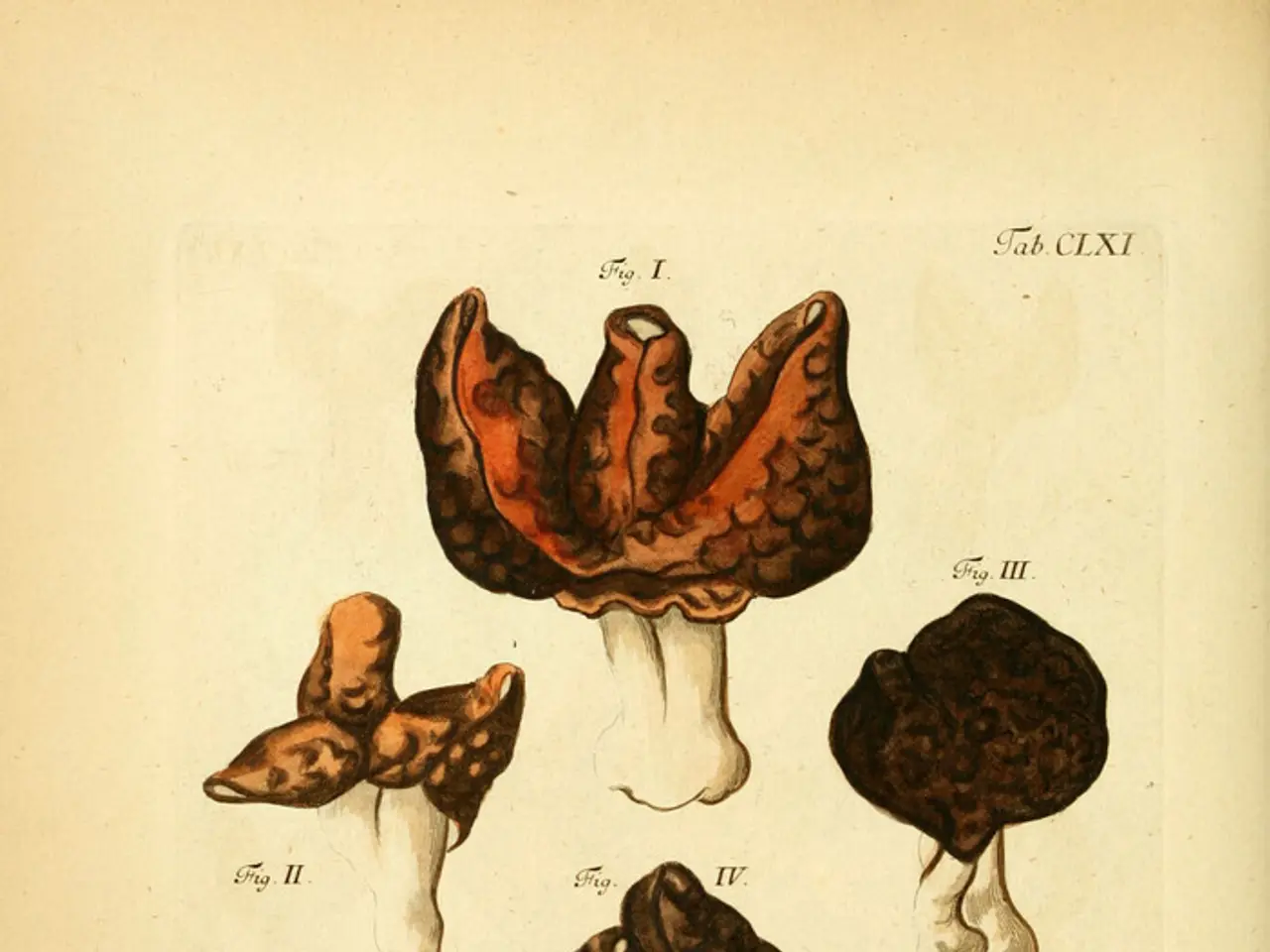Foraged Fungi: A Guide to Edible and Potentially Dangerous Mushrooms in Nature
Wild Mushrooms in Ohio: A Guide to Safe Foraging
Exploring the woods of Ohio during certain seasons can reveal a treasure trove of edible mushrooms, each with its unique characteristics and benefits. However, it's crucial to approach mushroom foraging with caution, as many look-alikes can be poisonous.
One of the safe and edible mushrooms you might come across is the Chanterelle mushroom. These nutrient-rich fungi are prized for cooking, but they have dangerous look-alikes such as the Jack-O-Lantern and False Chanterelle mushrooms that are poisonous. Proper expert identification is essential before consuming.
Another edible mushroom is the Chicken of the Woods (Sulphur shelf mushrooms). These are edible and nutritious, but they should be picked from clean environments and correctly identified to avoid confusion with toxic species.
Oyster mushrooms are another safe option, commonly found in northeast Ohio forests. They are considered relatively easier to identify.
The Hen-of-the-Woods (Maitake) is a popular edible mushroom known for its culinary and nutritional value.
Giant Puffballs (Calvatia gigantea) can also be edible when young, but they can cause digestive issues if overripe or if spores have developed. Cutting open to check the internal color and texture is a crucial identification step.
Other edible mushrooms include the Meadow mushroom (Agaricus), found in grassy areas, late summer and early fall, with pink gills becoming chocolate brown, and the Slippery jack (Suillus, Boletus), a fleshy pore mushroom, under 2- and 3-needle pines, both of which are edible.
However, it's important to note that many edible mushrooms have toxic look-alikes. Foraging in Ohio requires careful, expert guidance. Joining local mushroom identification walks or workshops can help you learn to safely distinguish species. Consuming any wild mushroom without proper training is risky. In cases of mushroom poisoning, contacting Poison Control at 1-800-222-1222 is urgent.
So, the next time you're out for a walk in the woods, keep an eye out for these safe and edible mushrooms. But remember, always approach foraging with caution and seek expert guidance to ensure your safety.
References:
[1] Ohio Department of Natural Resources, Division of Wildlife. (n.d.). Mushrooms. Retrieved from https://wildlife.ohiodnr.gov/species-and-habitats/wildlife-diversity/wildlife-resources/wildlife-habitat-management/forests/mushrooms
[2] Ohio State University Extension. (2019). Wild Mushrooms. Retrieved from https://ohioline.osu.edu/factsheet/HYG-5002
[3] Ohio State University Extension. (2018). Mushroom Poisoning. Retrieved from https://ohioline.osu.edu/factsheet/HYG-5003
[4] Ohio State University Extension. (n.d.). Morel Mushrooms. Retrieved from https://ohioline.osu.edu/factsheet/HYG-5001
[5] Ohio State University Extension. (n.d.). False Morels. Retrieved from https://ohioline.osu.edu/factsheet/HYG-5004
Delving into the diverse offerings of Ohio's natural landscape, one can explore the realms of food-and-drink with the discovery of edible mushrooms. Home-and-garden enthusiasts may find these wild finds intriguing, as many mushrooms, such as the Chanterelle, Chicken of the Woods, Oyster, Hen-of-the-Woods (Maitake), Giant Puffballs, Meadow mushroom (Agaricus), and Slippery jack (Suillus, Boletus), can be integrated into various dishes. However, due to potential look-alikes with poisonous mushrooms, education-and-self-development through foraging workshops or mushroom identification walks is highly recommended before embarking on any mushroom-hunting adventure in Ohio.




